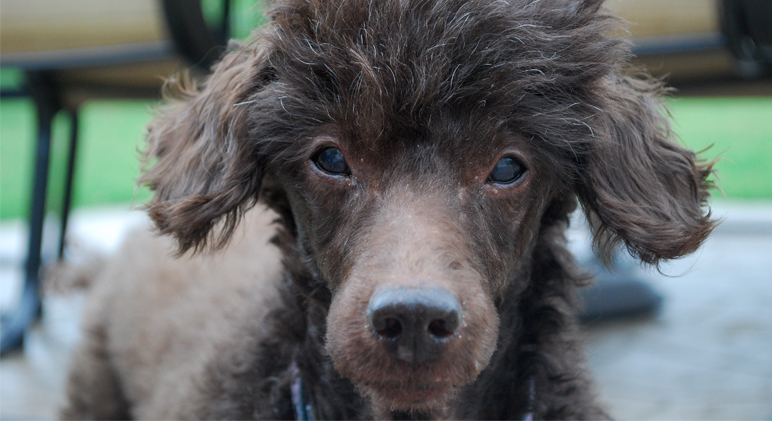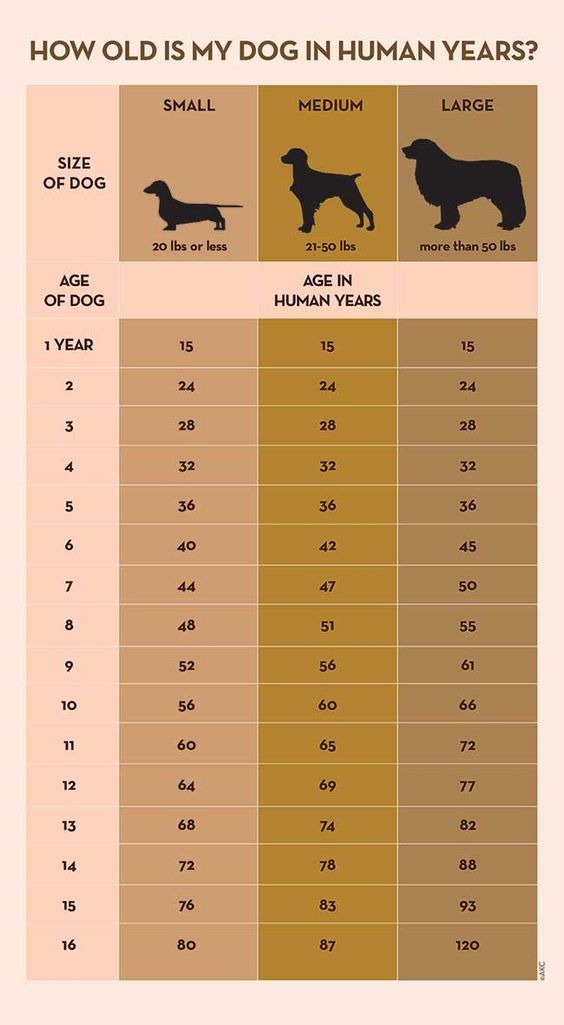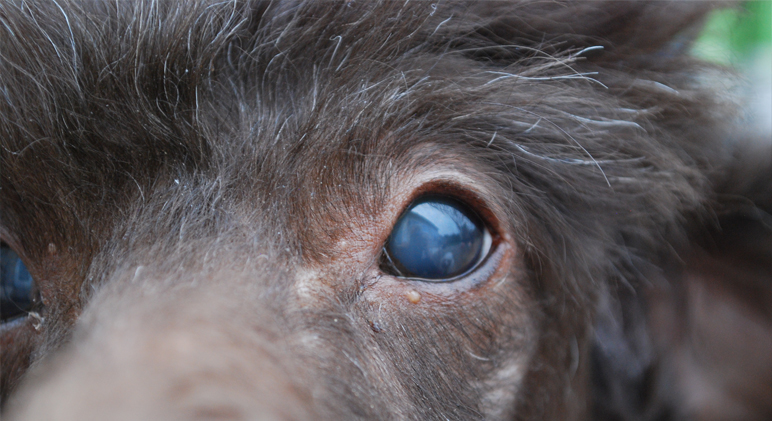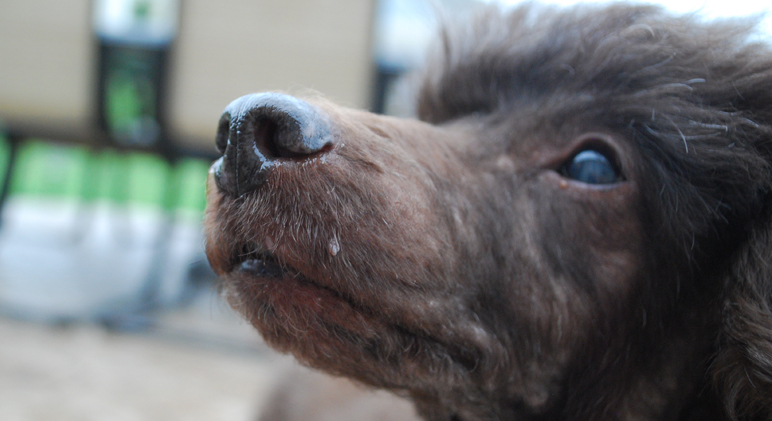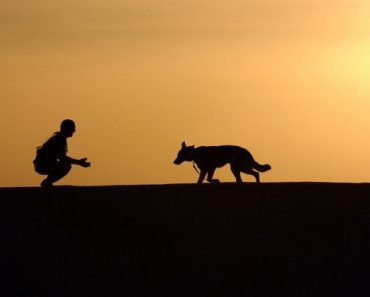Aging is a natural part of life. Unfortunately, it happens a whole lot earlier for canines than it does for humans. Read on to find out when your little one is considered a senior dog and 12 common signs your fur kid is getting up there in years.
When Does a Dog Become a Senior?
First of all, we can toss the myth that one human year is equivalent to seven canine years. Dogs definitely age at a rate faster than humans, but it’s not as simple as the familiar 1:7 ratio. Actually, in the first year of a pooch’s life, it’s a little more than double that number! The exact origin of the 1:7 rule is unknown, but it came about sometime in the 1950’s. At that time the average canine lived for approximately 10 years and the average human for 70 years—hence: 1:7.
Today, though, researchers break it down much differently. Check out this infographic from the American Kennel Club (AKC)—I think you’ll be surprised. Notice that dog size also plays a big role in aging:
Top 12 Signs Of Aging In Dogs
Cloudy Eyes:
Are you noticing visual changes in your dog? Maybe your pooch isn’t seeing as well as he used to. Is he bumping into things? Does your pup get surprised or startled when you approach him? Does your senior dog have cloudy eyes? If the answer is yes to any of these questions, you’ll need a vet check to evaluate what’s going on with your dog’s eye health. It may be something benign or it may be serious and require treatment.
- Nuclear Sclerosis is a hardening of the eye’s lens and common in older dogs. It’s a condition where the appearance of the lens is cloudy and possibly bluish. Normally the pooch can still see, though. No treatment is necessary for Nuclear Sclerosis, but a vet check is imperative for an accurate diagnosis.
- Cataracts, on the other hand, can be devastating to your pooch’s vision. The eye/eyes will have a cloudy, whitish, or crackly appearance. There is a clouding of the eye’s lens which prevents light from passing through, ultimately causing a loss of vision. Cataracts can appear in one or both eyes. It’s crucial to have an accurate diagnosis and discuss an appropriate treatment plan with your vet. Although we are talking about senior dog challenges here, it should be noted that there are different types of cataracts and it’s possible to have them at an early age.
- Glaucoma is a condition where the aqueous humor (the eye’s fluid) doesn’t drain properly. Since the eyes will continue to produce fluid, failure of proper drainage leads to an increased pressure within the eyes. This increase in pressure causes damage to the internal structures of the eye, leading to visual changes and can eventually cause blindness. This is a very serious condition and must be treated by the vet.
Hearing Loss:
Hearing loss is another natural part of aging and unless your pooch suffers from a severe loss you probably won’t even notice. If Fido’s having a severe hearing loss, he may not come when you call him or follow commands. He may also get startled when you approach, especially when he’s sleeping. If your pooch is a little hard of hearing, tread lightly when approaching and gently let him know you are there.
Dental Issues:
Dental issues brought on by periodontal disease can lead to devastating effects. If your pooch has bad breath, plaque buildup, swollen gums, or pulls away when you try to look at his teeth, it’s time to get them checked. Bacteria from dental disease can lead to heart disease, kidney disease, and all kinds of systemic problems. While this can happen to any dog, toy dogs are especially prone. Many show early signs by just three years old.
Joint Pain:
Is Fido slowing down? Not running or jumping like he used to? Maybe he’s laying around and sleeping more than normal? Often times joint pain leads to limited mobility. It makes sense—if it hurts to jump then you’re probably going to limit your jumping. Ask any senior human who suffers from joint pain and they’ll tell you that the pain can be debilitating. Unfortunately, your pooch can’t tell you when he’s in pain, so you have to be alert to the signs. Couple that with the fact that most dogs are quite stoic and are more prone to hiding their pain.
When a dog is in pain you will probably find him laying around and sleeping more often. If you think that your pooch is suffering from joint pain, talk to your vet. There are natural and over-the-counter remedies for joint pain that are known to be very helpful. Ask your vet about glucosamine chondroitin.
Weight Gain/Obesity:
Hormonal changes, a slowing metabolism, and a more sedentary lifestyle are all contributors to weight gain. Just like with humans, canine obesity can be a precursor to a host of health problems, such as diabetes, certain cancers, and joint diseases. As your pooch ages and slows down, he’ll need to take in fewer calories. You don’t have to give him less to eat. Rather, you should just be more creative in what you’re feeding him. Instead of a biscuit for a treat, you may want to cut up some carrots, boil or dehydrate green beans, slice apples (no seeds), or make him some jerky. These are just a few ways to let your fur baby indulge in some yummy and nutritious snacks without the added unnecessary calories.
Lumps, Bumps, and Growths:
As your dog ages the probability of lumps and bumps increases. Know what’s normal for your pooch and it’ll be easier to catch anything that’s new/unusual. During a quiet time when you’re just sitting around and stroking your furry kid, run your hands up and down his head, back, belly, neck, and underarms so you can identify any lumps, bumps, or growths that might be there. If you find anything suspicious, have your vet check it out.
Urinary Incontinence:
A common problem with middle-aged and senior dogs is urinary incontinence. It’s most common in spayed females, but it can happen to males as well. Urinary incontinence is the involuntary leakage of urine, which often occurs when your pooch is sleeping. If you notice a lot of licking going on down there then it may be a result of leaking urine. Talk to your vet. To keep things a little less messy in the house, if you notice your pooch has urinary incontinence, you may want to put him in a doggy diaper. You can even use regular disposable human baby diapers and cut a hole for the tail. They are cheaper and they work great!
Digestive Disorders:
It’s important to keep an eye on your senior dog’s gut and digestive health. Healthy digestion is necessary for nutrient absorption so your pooch can reap the full benefit of the foods he eats. If your pup is experiencing digestive issues some signs you may notice are:
- Excessive gas (burping or passing wind)
- Vomiting
- Bowels changes – constipation or diarrhea.
Weakened Immune System:
Like humans, when a dog ages, their immune system may not be as strong as it once was. This makes them more susceptible to illness. Make sure your pooch is eating a well-balanced diet, keep him mentally and physically stimulated, and make sure any necessary vaccines or titers are up-to-date.
Cancer:
Just hearing the word cancer is enough to make the tears flow. What’s even scarier—experts say approximately 50% of dogs over 10 years old will die from or with cancer. Canines get many of the same types of cancers as humans. Some are easier to detect than others. Stay alerted to changes in your pooch’s baseline. I can’t stress enough the importance of increasing your vet wellness visits to twice a year for your middle aged and senior canine kids, and more often if you think there’s a problem. Here are some possible warning signs of cancer to be aware of:
- Unexplained Weight Loss
- Decreased appetite
- Pain
- New or changing lumps or bumps anywhere on your pooch
- Swollen lymph glands
- Sores that don’t heal
- Unexplained bleeding or discharge from anywhere on your pooch’s body
- Urinary or bowel changes
- Breathing problems or coughing
- Distended belly
- Depressed and sleeping a lot
Heart Disease and Respiratory Disease:
As your pup ages so do his heart and lungs. The heart, which pumps blood around the body, can become less efficient with age. Things wear out. Heart valves become less elastic and circulation is often compromised, which could lead to Congestive Heart Failure, a common condition in elderly dogs. The Lungs also become less elastic with aging, and they too can lose their ability to oxygenate the blood efficiently. Some symptoms of compromised heart, lungs, and Congestive Heart Failure are:
- Coughing while exercising, after exercise or prior to going to sleep
- Gums or tongue looking bluish because of decreased oxygen
- Swelling in the belly from fluid
- Weight gain
- Restlessness
- Difficulty sleeping
- Fatigue
- Passing out
Behavioral Changes, Dementia, or Forgetfulness:
As Fido ages, narrowing of blood vessels and/or possible nerve damage in the brain can lead to circulatory and neurological changes, which may alter cognition and behavior. If you notice any changes in your fur kids mental status, be sure to talk to your vet to get to the core of the issue.
Senior Dog Summary
Small dogs are considered senior at 9 or 10 years old and large dogs at 5 or 6. Just like with humans, they will experience age-related issues very differently. Some will sail through senior living with little to no issues and some will be a little more fragile. Keep alert to changes and if you suspect something is brewing…visit your vet.

